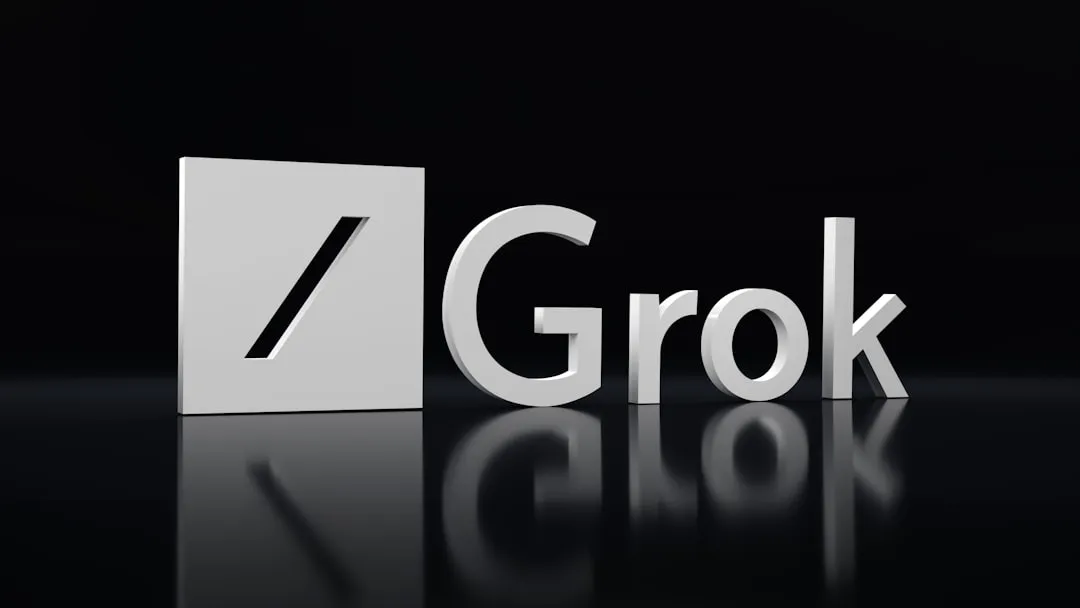Reviewed by Julianne Ngirngir
When solar storms struck Earth in May 2024, most forecasting systems were caught off guard. But a new artificial intelligence model trained on decades of solar data predicted the arrival of these intense storms "with uncertainty as small as one minute." This breakthrough represents more than just improved accuracy—it signals the dawn of a new era in space weather prediction, where AI-powered digital twins of our nearest star could provide the critical warning time needed to protect our increasingly vulnerable technological infrastructure.
The collaboration between IBM and NASA has produced Surya, a foundation model that creates a dynamic digital twin of the Sun using nine years of data from NASA's Solar Dynamics Observatory. This 366-million-parameter model can predict solar flares up to two hours in advance, doubling the warning time of traditional methods. The stakes couldn't be higher: a major solar storm could directly affect global telecommunications, collapse electrical grids, and disturb GPS navigation, with economic impacts reaching into the trillions.
How digital twins are revolutionizing solar storm forecasting
Think of trying to predict your moody friend's next outburst—except that friend is a massive ball of plasma 93 million miles away, and when it has a bad day, entire countries can lose power. That's essentially what scientists have been wrestling with when it comes to solar storm prediction. Now here's what changes everything: they've figured out how to build a virtual copy of the Sun that can actually tell us what's coming with unprecedented precision.
The concept of creating a digital twin of the Sun represents a fundamental shift in how we approach space weather prediction. Surya was trained with nine years of data collected by NASA's Solar Dynamics Observatory, which captures high-resolution images every 12 seconds and takes precise measurements of the sun's magnetic field. This creates a dynamic virtual replica that updates continuously with new data, enabling researchers to run simulations and test scenarios that would be impossible to study on the actual Sun.
The sophistication of the AI architecture behind this approach is what makes it genuinely game-changing. A long-range vision transformer was employed—AI architecture that enables detailed analysis of very high-resolution images and identifies relationships between components regardless of their distance. Think of it as giving the AI the ability to spot patterns across the entire solar surface simultaneously, rather than just looking at isolated hot spots, while understanding how distant regions influence each other.
The technical optimization goes deeper than just processing power. The model's performance was enhanced using spectral gating, which reduces memory usage by up to 5 percent by filtering out noise in the data. This isn't just about efficiency—it's about enabling the model to focus on the solar signals that actually matter for prediction while ignoring the cosmic background static that could throw off less sophisticated systems.
The true breakthrough lies in the model's adaptability. During testing, Surya demonstrated its ability to integrate data from other instruments like the Parker Solar Probe and the Solar and Heliospheric Observatory. This multi-source capability means the model can adapt to different datasets and deliver reliable results across various forecasting tasks, from flare activity to solar wind speed prediction. Rather than being locked into a single data source, Surya can synthesize information from multiple perspectives on solar activity, creating a more comprehensive understanding of what drives solar storms.
The AI breakthrough: from minutes to hours of warning
Here's what's genuinely remarkable about this leap forward: we've gone from essentially educated guesswork to actionable prediction windows that could save trillions in infrastructure damage.
While traditional prediction models can only predict a flare one hour in advance based on signals detected in specific regions of the sun, Surya provided a two-hour lead by using visual information. The model is thought to be the first to provide this kind of extended warning capability. That extra hour isn't just incremental progress—it's the difference between reactive damage control and proactive infrastructure protection.
Working alongside Surya is NASA's DAGGER model, which tackles the Earth-impact prediction challenge from a different angle. DAGGER can quickly and accurately predict geomagnetic disturbances worldwide, 30 minutes before they occur, with predictions updating every minute. The speed is staggering: the model produces predictions in less than a second, making it incredibly responsive to changing solar conditions. Together, these models create a prediction pipeline that spans from solar flare initiation to Earth impact assessment.
The measurable improvements tell the story of a field transformed. In early testing, the team achieved a 16 percent improvement in solar flare classification accuracy, which represents a marked improvement over existing methods. When you consider that we're dealing with the most unpredictable object in our solar system, this level of accuracy improvement translates into the ability to distinguish between false alarms and genuine threats—a capability that becomes critical when evacuation or system shutdown decisions must be made quickly.
Most tellingly, when tested against historical storms, these AI models have consistently outperformed traditional methods in predicting solar flare occurrences, onset, and recovery phases. The May 2024 storms that caught other systems off guard became a validation moment that demonstrated these aren't just laboratory successes—they're operational improvements with real-world impact.
Why this timing couldn't be more critical
The convergence of AI capability and solar cycle timing creates an urgency that extends far beyond academic research. The development of these advanced prediction systems arrives precisely when we need them most, as multiple vulnerability factors align in potentially catastrophic ways.
The Carrington Event in 1859 sparked fires at telegraph stations and prevented messages from being sent—and that was when our most advanced technology was basically copper wire and mechanical switches. If the Carrington Event happened today, it would have even more severe impacts, including widespread electrical disruptions, persistent blackouts, and interruptions to global communications. The exponential increase in our technological dependence means the same solar event would now affect everything from financial transactions to medical devices to food distribution networks.
Recent events provide sobering proof of our ongoing vulnerability. A destructive solar storm in 1989 caused electrical blackouts across Quebec for 12 hours, plunging millions of Canadians into darkness and closing schools and businesses. The 2003 Halloween storms triggered a blackout in Sweden and caused disruptions to communications, aircraft, and spacecraft. Each of these events occurred when our technological infrastructure was far less interconnected than it is today.
The timing pressure intensifies when you consider where we are in the solar activity cycle. The risk of geomagnetic storms is presently increasing as we approach the next solar maximum—a peak in the Sun's 11-year activity cycle expected in 2025. This represents our first solar maximum since the widespread deployment of critical satellite-dependent systems like GPS navigation, mobile communications networks, and cloud computing infrastructure. We're heading into a period of peak solar activity with the most vulnerable technological ecosystem in human history.
The vulnerability multiplication factor is staggering. In a world increasingly dependent on technology, the effects of magnetic storms are growing ever more disruptive, affecting not just individual devices but entire interconnected systems that form the backbone of modern civilization. The development of AI prediction systems isn't just scientifically interesting—it's becoming an essential component of civilizational resilience.
Real-world applications and infrastructure protection
The transition from research breakthrough to operational deployment is where these AI systems prove their true value. Unlike academic models that remain in laboratories, these prediction tools are explicitly designed for integration into the decision-making systems that keep critical infrastructure running.
The DAGGER computer code is open source and can be adopted by power grid operators, satellite controllers, and telecommunications companies, allowing organizations to integrate these predictions directly into their operational protocols. This means the 30 minutes to two hours of advance warning can trigger automated protective responses: power companies can preemptively reduce grid loads, satellite operators can switch to safe mode configurations, and airlines can reroute flights away from polar regions where radiation exposure increases during solar storms.
The operational implications extend beyond simple system shutdowns. The model helps decision-making during solar storms to minimize or prevent damage to society's infrastructure, including power grids and satellites. Organizations can now implement graduated response protocols based on storm intensity predictions—from minor operational adjustments for weaker storms to full protective shutdowns for major events.
What makes this development particularly powerful is the collaborative approach to deployment. Surya is available on Hugging Face, GitHub, and via IBM's TerraTorch library, making it accessible to researchers and organizations worldwide. Rather than creating a proprietary system controlled by a single entity, the open-source approach enables rapid iteration and customization for specific use cases.
The foundation for widespread adoption extends beyond just the prediction model itself. The team is also open-sourcing SuryaBench, a set of curated datasets and benchmarks for space weather forecasting. This creates an entire ecosystem of tools that different organizations can use to develop specialized applications—from utilities focusing on power grid protection to telecommunications companies optimizing satellite constellation management during solar events.
The shift from reactive to proactive infrastructure protection represents a fundamental change in how we approach space weather risk management. Instead of waiting for solar storms to reveal vulnerabilities in our systems, we're finally getting the advance notice needed to implement protective measures before damage occurs.
The future of space weather prediction
The implications of these AI-powered systems extend far beyond current capabilities, pointing toward a future where space weather prediction becomes as reliable and routine as terrestrial weather forecasting. As NASA's Kevin Murphy noted, developing a foundation model trained on NASA's heliophysics data makes it easier to analyze the complexities of the sun's behavior with unprecedented speed and precision. This foundation approach means we're not just solving today's prediction challenges—we're building the infrastructure for entirely new categories of solar research and operational applications.
The broader scientific transformation happening here goes beyond incremental improvements in existing methods. Surya is part of a broader effort at IBM to embrace generative and automated approaches that empower algorithms to be discovered, tested, and evolved at scale. This represents a shift where AI becomes not just a tool for analyzing existing data, but an active participant in generating new hypotheses about solar behavior and testing them against vast datasets that would be impossible for human researchers to process manually.
The techniques pioneered for solar prediction are already showing promise for understanding other aspects of space weather and astronomical phenomena. We're looking at a future where digital twins of astronomical objects could help us understand everything from planetary atmospheres to stellar evolution patterns. The computer vision and pattern recognition capabilities developed for analyzing solar surface activity could eventually be applied to detecting potentially hazardous asteroids, understanding exoplanetary systems, or even predicting cosmic ray fluctuations that affect space travel.
The collaborative nature of this research points toward an accelerating pace of innovation. Scientists from IBM, NASA, and eight other research centers came together to build Surya, and they're sharing it openly with the global research community. This approach creates a compounding effect where improvements made by one research team can be immediately incorporated by others working on related challenges.
The ultimate goal, as researcher Andrés Muñoz-Jaramillo emphasized, is to "give Earth the longest lead time possible." The hope is that these models have learned all the critical processes behind our star's evolution through time, enabling the extraction of actionable insights that could protect our technological infrastructure from the next major solar event. But the broader vision extends to creating a comprehensive understanding of space weather that could inform everything from Mars mission planning to the design of next-generation satellites.
Bottom line: we're witnessing a fundamental transformation in how we understand and predict space weather. With AI models like Surya and DAGGER providing unprecedented accuracy and lead time, we're better positioned than ever to protect our increasingly connected world from the Sun's most powerful outbursts. The question isn't whether the next major solar storm will come—it's whether we'll be ready when it does. For the first time in human history, the answer is becoming a confident yes.










Comments
Be the first, drop a comment!